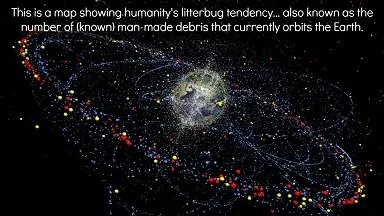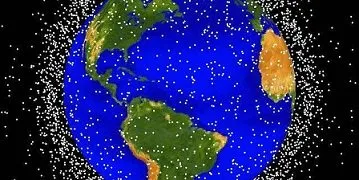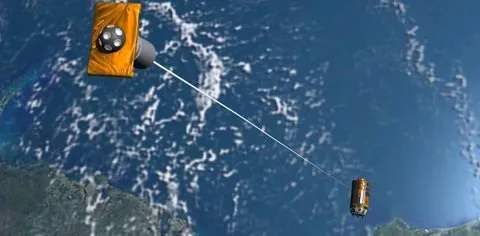Orbital debris, as you may have been aware of, are pieces of junks that orbit the earth. These could be fragments of broken objects like; satellites that had been sent to the space by humans.

According to a publication by NASA, there are over 500,000 of these junks (with over 200,000 of them bigger than 0.1m) orbiting the earth currently, and this figure is increasing as humans continue to send objects to space. Just some days ago, Elon Musk sent his very own heavy falcon to space too, which would eventually contribute to this orbital debris.
Does this orbital debris pose threats?
I know that's what could be popping up in the mind of some people. But let's look at this scenario: Some of these pieces of debris are orbiting at an insane speed of over 17,500mph. At this speed, size would not really matter. Because, even a very small piece of junk traveling at this speed can spell doom if it hits a space shuttle, a space station, or even one of the useful satellites orbiting the earth too (think about a small bullet fired from a gun; the size of the bullet is not as important as the speed at which it was shot).
Believe me, at the rate by which human space-exploration activities are releasing these junks; if nothing is done about it, it could make it almost impossible for future space travels. This is because, this junks would be so much and densely packed that a space shuttle cannot escape the earth without getting hit badly by these nasty junks.

So, with these problems and threats inherent in the presence of excess orbital debris, scientists moved with an idea to turn these "enemies" into our "allies", and this is the process of recycling these junks.
Recycle those junks
First of all we have to consider that these debris are actually materials that have been used to construct space "stuffs", and these materials are also expensive. You wouldn't be wrong to infer that these are tap-able resources orbiting the earth.
But before now, recycling of these materials has been seen as an advancement in futility. This is due to the fact that; even at low orbit; the speed of these junks is so insane.
According to the analysis of Stuart Grey (Aerospace Engineer)
The speed of object at low earth orbit could get up to 4.3miles/second, and this would make them extremely difficult to be caught. - Stuart Grey [paraphrased by me]
Another option also came up; and this is to design a space shuttle that would have equal speed with this orbital debris. But this option was not too cost effective.
The idea of this kept up as debates, until researchers from NIAC (NASA Innovative Advanced Concepts) proposed a better alternative: An ultra thin spacecraft that would trap and wrap this debris just like large nets.

Once these debris are caught in these nets, the speed would be slowed down, and be dragged along with the rocket, and also would gather more on the way.
Note: The net would have to be very tough to hold these objects at high speed. Just like the normal soccer goal net would hold ball at full speed.
So you see, once these debris are dragged back to the earth, they can be reused to construct other space shuttles (that would still go up there and liter the space :D).
There's yet another option, and I would love to touch it in brief before I conclude.
Aerodynamic tethering
This is another way to clear up junks from the space. But in this procedure, electrified cables are launched into the space.

The idea behind this is: Once these cables are electrified, it can attract this debris, which would cause a tilt in their direction towards the atmosphere. And once they cross the threshold into the atmosphere at this insane speed, they would burn up because of air resistance and pressure.
This procedure is only potent for clearing up this debris, but not for recycling them, because the debris would burn up.
Conclusion
Human space activities have contributed to the increase in space junks which have severe threats attached to them.
In my opinion, there should be; of necessity; an immediate response to debride the space. Otherwise, space travel would be practically impossible in the future.
Thanks for reading
References for further reading: Ref1, Ref2, Ref3, Ref4, Ref4


gif by @foundation